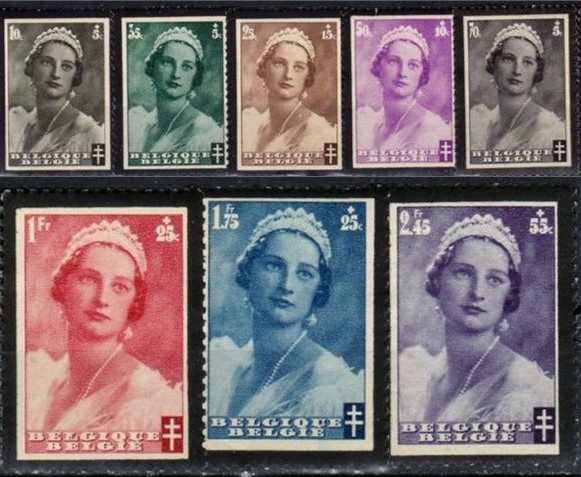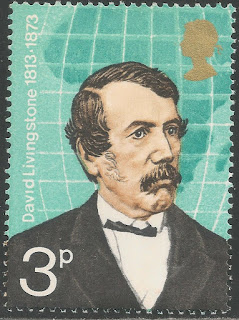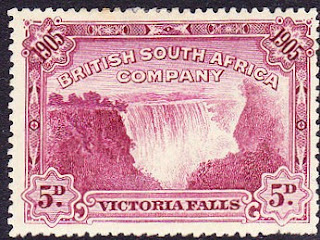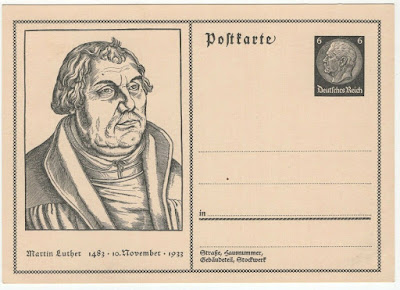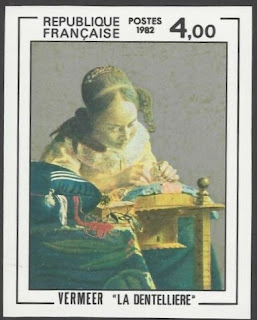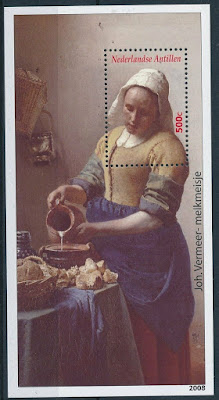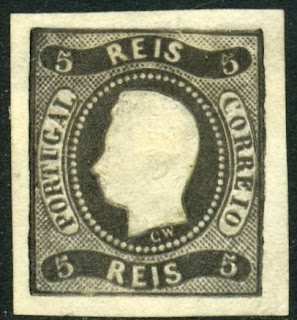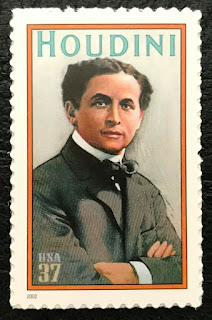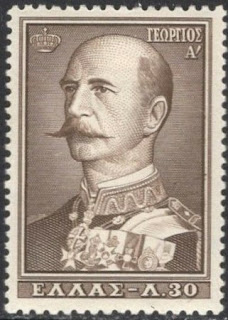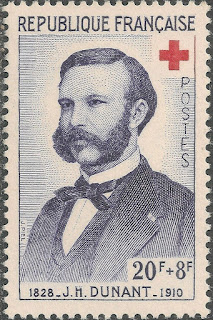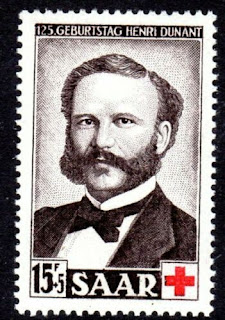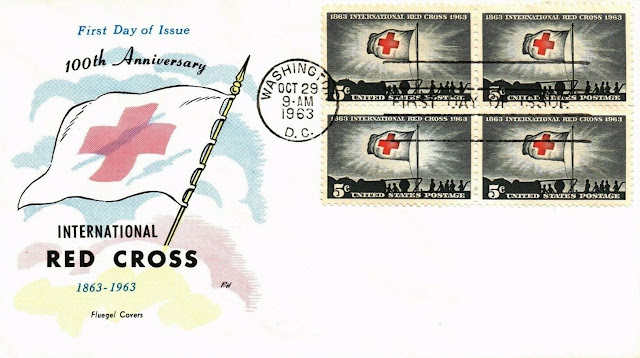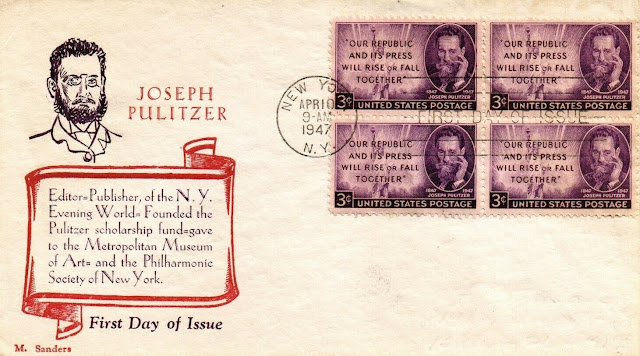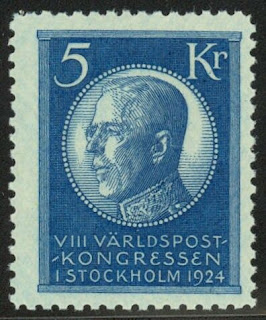Stamps from Russia depicting Catherine the Great
Tuesday, November 17, 2020
November 17th in stamps Joost van den Vondel, Catherine the Great, Astrid of Sweden, Nathaniel Palmer
Stamps from Russia depicting Catherine the Great
Monday, November 16, 2020
November 16th in stamps Kalākaua, David Livingstone Victoria Falls, UNESCO, Oklahoma statehood
Here are some events that happened on November 16th. It could be an event or a person that died or was born on that day
1836 Born: Kalākaua of Hawaii (d. 1891)
Kalākaua (David Laʻamea Kamananakapu Mahinulani Naloiaehuokalani Lumialani Kalākaua; November 16, 1836 – January 20, 1891), sometimes called The Merrie Monarch, was the last king and penultimate monarch of the Kingdom of Hawaiʻi, reigning from February 12, 1874, until his death. Succeeding Lunalilo, he was elected to the vacant throne of Hawaiʻi against Queen Emma. Kalākaua had a convivial personality and enjoyed entertaining guests with his singing and ukulele playing. At his coronation and his birthday jubilee, the hula that had been banned from public in the kingdom became a celebration of Hawaiian culture.
During his reign, the Reciprocity Treaty of 1875 brought great prosperity to the kingdom. Its renewal continued the prosperity but allowed the United States to have exclusive use of Pearl Harbor. In 1881, he took a trip around the world to encourage the immigration of contract sugar plantation workers. Kalākaua wanted Hawaiians to broaden their education beyond their nation. He instituted a government financed program to sponsor qualified students to be sent abroad to further their education. Two of Kalākaua's projects, the statue of Kamehameha I and the rebuilding of ʻIolani Palace, were expensive endeavors but are popular tourist attractions today.
Extravagant expenditures and his plans for a Polynesian confederation played into the hands of annexationists who were already working towards a United States takeover of Hawaiʻi. In 1887, he was pressured to sign a new constitution that made the monarchy little more than a figurehead position. He had faith in his sister Liliʻuokalani's abilities to rule as regent when he named her as his heir-apparent following the death of their brother, William Pitt Leleiohoku II, in 1877. After his death, she became the last monarch of Hawaiʻi.
Stamps from Hawaii depicting Kalākaua
1855 – David Livingstone becomes the first European to see the Victoria Falls in what is now Zambia-Zimbabwe.
David Livingstone (19 March 1813 – 1 May 1873) was a Scottish physician, Congregationalist, and pioneer Christian missionary with the London Missionary Society, an explorer in Africa, and one of the most popular British heroes of the late 19th-century Victorian era. He had a mythic status that operated on a number of interconnected levels: Protestant missionary martyr, working-class "rags-to-riches" inspirational story, scientific investigator and explorer, imperial reformer, anti-slavery crusader, and advocate of British commercial and colonial expansion.
Livingstone's fame as an explorer and his obsession with learning the sources of the Nile River was founded on the belief that if he could solve that age-old mystery, his fame would give him the influence to end the East African Arab-Swahili slave trade. "The Nile sources," he told a friend, "are valuable only as a means of opening my mouth with power among men. It is this power which I hope to remedy an immense evil.":289 His subsequent exploration of the central African watershed was the culmination of the classic period of European geographical discovery and colonial penetration of Africa. At the same time, his missionary travels, "disappearance", and eventual death in Africa—and subsequent glorification as a posthumous national hero in 1874—led to the founding of several major central African Christian missionary initiatives carried forward in the era of the European "Scramble for Africa".
Stamp from Great Britain depicting David Livingstone
Victoria Falls (Lozi: Mosi-oa-Tunya, "The Smoke That Thunders"; Tonga: Shungu Namutitima, "Boiling Water") is a waterfall on the Zambezi River in southern Africa, which provides habitat for several unique species of plants and animals. It is located on the border between Zambia and Zimbabwe and is considered to be one of the world's largest waterfalls due to its width of 1,708 metres (5,604 ft).
Stamps from Rhodesia depicting Victoria Falls
1907 – Indian Territory and Oklahoma Territory join to form Oklahoma, which is admitted as the 46th U.S. state.
Oklahoma is a state in the South Central region of the United States, bordered by the state of Texas on the south and west, Kansas on the north, Missouri on the northeast, Arkansas on the east, New Mexico on the west, and Colorado on the northwest. Located partially in the western extreme of the Upland South, it is the 20th-most extensive and the 28th-most populous of the 50 United States. Its residents are known as Oklahomans (or colloquially, "Okies"), and its capital and largest city is Oklahoma City.
The state's name is derived from the Choctaw words okla and humma, meaning "red people". It is also known informally by its nickname, "The Sooner State", in reference to the non-Native settlers who staked their claims on land before the official opening date of lands in the western Oklahoma Territory or before the Indian Appropriations Act of 1889, which increased European-American settlement in the eastern Indian Territory. Oklahoma Territory and Indian Territory were merged into the State of Oklahoma when it became the 46th state to enter the union on November 16, 1907.
With ancient mountain ranges, prairie, mesas, and eastern forests, most of Oklahoma lies in the Great Plains, Cross Timbers, and the U.S. Interior Highlands, all regions prone to severe weather. Oklahoma is on a confluence of three major American cultural regions and historically served as a route for cattle drives, a destination for Southern settlers, and a government-sanctioned territory for Native Americans. Twenty-five Native American languages are spoken in Oklahoma.
A major producer of natural gas, oil, and agricultural products, Oklahoma relies on an economic base of aviation, energy, telecommunications, and biotechnology. Oklahoma City and Tulsa serve as Oklahoma's primary economic anchors, with nearly two-thirds of Oklahomans living within their metropolitan statistical areas. These cities, collectively known as the Oklahoma Metropolitan Corridor, are included in the Texas Triangle megaregion.
US stamps issued to commemorate Oklahoma statehood
1945 – UNESCO is founded.
The United Nations Educational, Scientific and Cultural Organization (UNESCO; French: Organisation des Nations unies pour l'éducation, la science et la culture) is a specialised agency of the United Nations (UN) aimed at promoting world peace and security through international cooperation in education, the sciences, and culture. It has 193 member states and 11 associate members, as well as partners in the nongovernmental, intergovernmental, and private sector. Headquartered in Paris, France, UNESCO has 53 regional field offices and 199 national commissions that facilitate its global mandate.
UNESCO was founded in 1945 as the successor to the League of Nations' International Committee on Intellectual Cooperation. Its constitution establishes the agency's goals, governing structure, and operating framework. UNESCO's founding mission, which was shaped by the Second World War, is to advance peace, sustainable development and human rights by facilitating collaboration and dialogue among nations. It pursues this objective through five major program areas: education, natural sciences, social/human sciences, culture and communication/information. UNESCO sponsors projects that improve literacy, provide technical training and education, advance science, protect independent media and press freedom, preserve regional and cultural history, and promote cultural diversity.
As a focal point for world culture and science, UNESCO's activities have broadened over the years to include assisting in the translating and disseminating of world literature, establishing international cooperation agreements to secure World Heritage Sites of cultural and natural importance, defending human rights, bridging the worldwide digital divide, and creating inclusive knowledge societies through information and communication. UNESCO has launched several initiatives and global movements, such as Education For All, to further advance its core objectives.
UNESCO is governed by the General Conference, composed of member states and associate members, which meets biannually to set the agency's programmes and the budget. It also elects members of the Executive Board, which manages UNESCO's work, and appoints every four years the Director-General, who serves as UNESCO's chief administrator. UNESCO is a member of the United Nations Development Group, a coalition of UN agencies and organisations aimed at fulfilling the Sustainable Development Goals.
French stamps issued to commemorate UNESCO
Saturday, October 31, 2020
October 31st in stamps Martin Luther posts his 95 Theses, Nevada statehood, Luís I of Portugal, Johannes Vermeer, Houdini, Adolf von Baeyer
Here are some events that happened on October 31st. It could be an event or a person that died or was born on that day
1517 – Protestant Reformation: Martin Luther posts his 95 Theses on the door of the Castle Church in Wittenberg.
Martin Luther (10 November 1483 – 18 February 1546) was a German professor of theology, composer, priest, monk, and a seminal figure in the Protestant Reformation.
Luther was ordained to the priesthood in 1507. He came to reject several teachings and practices of the Roman Catholic Church; in particular, he disputed the view on indulgences. Luther proposed an academic discussion of the practice and efficacy of indulgences in his Ninety-five Theses of 1517. His refusal to renounce all of his writings at the demand of Pope Leo X in 1520 and the Holy Roman Emperor Charles V at the Diet of Worms in 1521 resulted in his excommunication by the pope and condemnation as an outlaw by the Holy Roman Emperor.
Luther taught that salvation and, consequently, eternal life are not earned by good deeds but are received only as the free gift of God's grace through the believer's faith in Jesus Christ as redeemer from sin. His theology challenged the authority and office of the Pope by teaching that the Bible is the only source of divinely revealed knowledge, and opposed sacerdotalism by considering all baptized Christians to be a holy priesthood. Those who identify with these, and all of Luther's wider teachings, are called Lutherans, though Luther insisted on Christian or Evangelical (German: evangelisch) as the only acceptable names for individuals who professed Christ.
His translation of the Bible into the German vernacular (instead of Latin) made it more accessible to the laity, an event that had a tremendous impact on both the church and German culture. It fostered the development of a standard version of the German language, added several principles to the art of translation, and influenced the writing of an English translation, the Tyndale Bible. His hymns influenced the development of singing in Protestant churches. His marriage to Katharina von Bora, a former nun, set a model for the practice of clerical marriage, allowing Protestant clergy to marry.
In two of his later works, Luther expressed antagonistic views towards Jews. His rhetoric was not directed at Jews alone, but also towards Roman Catholics, Anabaptists, and nontrinitarian Christians. Luther died in 1546 with Pope Leo X's excommunication still effective.
Stamps from several countries depicting Martin Luther
1632 Born: Johannes Vermeer, Dutch painter (d. 1675)
Johannes Vermeer (October 1632 – December 1675) was a Dutch Baroque Period painter who specialized in domestic interior scenes of middle class life. He was a moderately successful provincial genre painter in his lifetime but evidently was not wealthy, leaving his wife and children in debt at his death, perhaps because he produced relatively few paintings.
Vermeer worked slowly and with great care, and frequently used very expensive pigments. He is particularly renowned for his masterly treatment and use of light in his work.
Vermeer painted mostly domestic interior scenes. "Almost all his paintings are apparently set in two smallish rooms in his house in Delft; they show the same furniture and decorations in various arrangements and they often portray the same people, mostly
He was recognized during his lifetime in Delft and The Hague, but his modest celebrity gave way to obscurity after his death. He was barely mentioned in Arnold Houbraken's major source book on 17th-century Dutch painting (Grand Theatre of Dutch Painters and Women Artists), and was thus omitted from subsequent surveys of Dutch art for nearly two centuries. In the 19th century, Vermeer was rediscovered by Gustav Friedrich Waagen and Théophile Thoré-Bürger, who published an essay attributing 66 pictures to him, although only 34 paintings are universally attributed to him today. Since that time, Vermeer's reputation has grown, and he is now acknowledged as one of the greatest painters of the Dutch Golden Age. Like some major Dutch Golden Age artists such as Frans Hals and Rembrandt, Vermeer never went abroad. And like Rembrandt, he was an avid art collector and dealer.
In 2008, American entrepreneur and inventor Tim Jenison developed the theory that Vermeer had used a camera obscura along with a "comparator mirror", which is similar in concept to a camera lucida but much simpler and makes it easy to match color values. He later modified the theory to simply involve a concave mirror and a comparator mirror. He spent the next five years testing his theory by attempting to re-create The Music Lesson himself using these tools, a process captured in the 2013 documentary film Tim's Vermeer.
In December 1675, Vermeer died after a short illness. He was buried in the Protestant Old Church on 15 December 1675.
Stamps from France, Netherlands and Netherlands Antilles depicting Vermeer's works
1835 Born: Adolf von Baeyer, German chemist and academic, Nobel Prize laureate (d. 1917)
Stamp issued by Guinea Bissau depicting Adolf von Baeyer
1838 Born: Luís I of Portugal (d. 1889)
Dom Luís I (31 October 1838 in Lisbon – 19 October 1889 in Cascais), known as The Popular (Portuguese: O Popular) was a member of the ruling House of Braganza, and King of Portugal from 1861 to 1889. The second son of Queen Maria II and her consort, King Ferdinand, he acceded to the throne upon the death of his elder brother King Pedro V.
Luís was a cultured man who wrote vernacular poetry, but had no distinguishing gifts in the political field into which he was thrust by the deaths of his brothers Pedro V and Fernando in 1861. Luís's domestic reign was a tedious and ineffective series of transitional governments called Rotativism formed at various times by the Progressistas (Liberals) and the Regeneradores (Conservatives), the party generally favoured by King Luís, who secured their long term in office after 1881. Despite a flirtation with the Spanish succession prior to the Franco-Prussian War of 1870–71, Luís's reign was otherwise one of domestic stagnation as Portugal fell ever further behind the nations of western Europe in terms of public education, political stability, technological progress and economic prosperity. In colonial affairs, Delagoa Bay was confirmed as a Portuguese possession in 1875, whilst Belgian activities in the Congo (1880s) and a British Ultimatum in 1890 denied Portugal a land link between Portuguese Angola and Portuguese Mozambique at the peak of the Scramble for Africa.
Stamps from Portugal and Madeira depicting Luís I
1864 – Nevada is admitted as the 36th U.S. state.
Nevada is a state in the Western United States. It is bordered by Oregon to the northwest, Idaho to the northeast, California to the west, Arizona to the southeast, and Utah to the east. Nevada is the 7th most extensive, the 32nd most populous, but the 9th least densely populated of the U.S. states. Nearly three-quarters of Nevada's people live in Clark County, which contains the Las Vegas–Paradise metropolitan area, including three of the state's four largest incorporated cities. Nevada's capital is Carson City.
Nevada is officially known as the "Silver State" because of the importance of silver to its history and economy. It is also known as the "Battle Born State" because it achieved statehood during the Civil War (the words "Battle Born" also appear on the state flag); as the "Sagebrush State", for the native plant of the same name; and as the "Sage-hen State".
Nevada is largely desert and semi-arid, much of it within the Great Basin. Areas south of the Great Basin are within the Mojave Desert, while Lake Tahoe and the Sierra Nevada lie on the western edge. About 86% of the state's land is managed by various jurisdictions of the U.S. federal government, both civilian and military.
Before European contact — and still today, American Indians of the Paiute, Shoshone, and Washoe tribes inhabited the land that is now Nevada. The first Europeans to explore the region were Spanish. They called the region Nevada (snowy) because of the snow which covered the mountains in winter like to Sierra Nevada in Spain. The area formed part of the Viceroyalty of New Spain, and became part of Mexico when it gained independence in 1821. The United States annexed the area in 1848 after its victory in the Mexican–American War, and it was incorporated as part of Utah Territory in 1850. The discovery of silver at the Comstock Lode in 1859 led to a population boom that became an impetus to the creation of Nevada Territory out of western Utah Territory in 1861. Nevada became the 36th state on October 31, 1864, as the second of two states added to the Union during the Civil War (the first being West Virginia).
US stamps commemorating Nevada's statehood
1926 Died: Harry Houdini, American magician and stuntman (b. 1874)
Harry Houdini (born Erik Weisz, later Ehrich Weiss or Harry Weiss; March 24, 1874 – October 31, 1926) was a Hungarian-born American illusionist and stunt performer, noted for his sensational escape acts. He first attracted notice in vaudeville in the United States and then as "Harry 'Handcuff' Houdini" on a tour of Europe, where he challenged police forces to keep him locked up. Soon he extended his repertoire to include chains, ropes slung from skyscrapers, straitjackets under water, and having to escape from and hold his breath inside a sealed milk can with water in it.
In 1904, thousands watched as he tried to escape from special handcuffs commissioned by London's Daily Mirror, keeping them in suspense for an hour. Another stunt saw him buried alive and only just able to claw himself to the surface, emerging in a state of near-breakdown. While many suspected that these escapes were faked, Houdini presented himself as the scourge of fake spiritualists. As President of the Society of American Magicians, he was keen to uphold professional standards and expose fraudulent artists. He was also quick to sue anyone who imitated his escape stunts.
Houdini made several movies but quit acting when it failed to bring in money. He was also a keen aviator and aimed to become the first man to fly a plane in Australia.
US stamp and FDC depicting Houdini
Friday, October 30, 2020
October 30th in stamps John Adams, Antoine Bourdelle, George I, King of the Hellenes, Henry Dunant founded the Red Cross
Here are some events that happened on October 30th. It could be an event or a person that died or was born on that day
1735 Born: John Adams, American lawyer and politician, 2nd President of the United States (d. 1826)
John Adams (October 30, 1735 – July 4, 1826) was an American statesman, attorney, diplomat, writer, and Founding Father who served as the second president of the United States from 1797 to 1801. Before his presidency he was a leader of the American Revolution that achieved independence from Great Britain, and also served as the first vice president of the United States. Adams was a dedicated diarist and regularly corresponded with many important figures in early American history including his wife and adviser, Abigail, and his letters and other papers are an important source of historical information about the era.
United States stamps depicting John Adams
1861 Born: Antoine Bourdelle, French sculptor and painter (d. 1929)
Antoine Bourdelle (30 October 1861 – 1 October 1929), born Émile Antoine Bordelles, was an influential and prolific French sculptor and teacher. He was a student of Auguste Rodin, a teacher of Giacometti and Henri Matisse, and an important figure in the Art Deco movement and the transition from the Beaux-Arts style to modern sculpture.
His studio became the Musée Bourdelle, an art museum dedicated to his work, located at 18, rue Antoine Bourdelle, in the 15th arrondissement of Paris, France.
French stamp and first day cover depicting Antoine Bourdelle or his works
1863 – Danish Prince Vilhelm arrives in Athens to assume his throne as George I, King of the Hellenes.
George I (24 December 1845 – 18 March 1913) was King of Greece from 30 March 1863 until his assassination in 1913.
Originally a Danish prince, he was born in Copenhagen, and seemed destined for a career in the Royal Danish Navy. He was only 17 years old when he was elected king by the Greek National Assembly, which had deposed the unpopular Otto. His nomination was both suggested and supported by the Great Powers: the United Kingdom of Great Britain and Ireland, the Second French Empire and the Russian Empire. He married Grand Duchess Olga Constantinovna of Russia in 1867, and became the first monarch of a new Greek dynasty. Two of his sisters, Alexandra and Dagmar, married into the British and Russian royal families. Edward VII of the United Kingdom and Alexander III of Russia were his brothers-in-law, and George V, Nicholas II, Christian X of Denmark and Haakon VII of Norway were his nephews.
George's reign of almost 50 years (the longest in modern Greek history) was characterized by territorial gains as Greece established its place in pre-World War I Europe. Britain ceded the Ionian Islands peacefully in 1864, while Thessaly was annexed from the Ottoman Empire after the Russo-Turkish War (1877–1878). Greece was not always successful in its territorial ambitions; it was defeated in the Greco-Turkish War (1897). During the First Balkan War, after Greek troops had captured much of Greek Macedonia, George was assassinated in Thessaloniki. Compared with his own long tenure, the reigns of his successors Constantine I, Alexander, and George II proved short and insecure.
Greece stamp depicting George I
1910 Died: Henry Dunant, Swiss activist, founded the Red Cross, Nobel Prize laureate (b. 1828)
Henry Dunant (born Jean-Henri Dunant; 8 May 1828 – 30 October 1910), also known as Henri Dunant, was a Swiss humanitarian, businessman and social activist. He was the visionary, promoter and co-founder of the Red Cross.
During a business trip in 1859, Dunant was witness to the aftermath of the Battle of Solferino in modern-day Italy. He recorded his memories and experiences in the book A Memory of Solferino which inspired the creation of the International Committee of the Red Cross (ICRC) in 1863. The 1864 Geneva Convention was based on Dunant's idea for an independent organisation to care for wounded soldiers.
Dunant was the founder of the Swiss branch of the Young Men's Christian Association YMCA.
In 1901 he received the first Nobel Peace Prize together with Frédéric Passy, making Dunant the first Swiss Nobel laureate.
Stamps from various countries issued to commemorate Dunant and the Red Cross
Thursday, October 29, 2020
October 29th in stamps International Red Cross, Joseph Pulitzer, Gustaf V of Sweden,
Here are some events that happened on October 29th. It could be an event or a person that died or was born on that day
1863 – Eighteen countries meet in Geneva and agree to form the International Red Cross.
The International Committee of the Red Cross (ICRC) is a humanitarian institution based in Geneva, Switzerland, and a three-time Nobel Prize Laureate. State parties (signatories) to the Geneva Convention of 1949 and its Additional Protocols of 1977 (Protocol I, Protocol II) and 2005 have given the ICRC a mandate to protect victims of international and internal armed conflicts. Such victims include war wounded, prisoners, refugees, civilians, and other non-combatants.
The ICRC is part of the International Red Cross and Red Crescent Movement along with the International Federation of Red Cross and Red Crescent Societies (IFRC) and 192 National Societies. It is the oldest and most honoured organization within the movement and one of the most widely recognized organizations in the world, having won three Nobel Peace Prizes in 1917, 1944, and 1963.
Up until the middle of the 19th century, there were no organized and well-established army nursing systems for casualties and no safe and protected institutions to accommodate and treat those who were wounded on the battlefield. In June 1859, the Swiss businessman Henry Dunant travelled to Italy to meet French emperor Napoléon III with the intention of discussing difficulties in conducting business in Algeria, at that time occupied by France. When he arrived in the small Italian town of Solferino on the evening of 24 June, he witnessed the aftermath of the Battle of Solferino, an engagement in the Second Italian War of Independence. In a single day, about 40,000 soldiers on both sides died or were left wounded on the field. Henry Dunant was shocked by the terrible aftermath of the battle, the suffering of the wounded soldiers, and the near-total lack of medical attendance and basic care. He completely abandoned the original intent of his trip and for several days he devoted himself to helping with the treatment and care for the wounded. He succeeded in organizing an overwhelming level of relief assistance by motivating the local population to aid without discrimination. Back in his home in Geneva, he decided to write a book entitled A Memory of Solferino which he published with his own money in 1862. He sent copies of the book to leading political and military figures throughout Europe. In addition to penning a vivid description of his experiences in Solferino in 1859, he explicitly advocated the formation of national voluntary relief organizations to help nurse wounded soldiers in the case of war. In addition, he called for the development of international treaties to guarantee the neutrality and protection of those wounded on the battlefield as well as medics and field hospitals.
Stamps from various countries issued to benefit the Red Cross
1911 Died: Joseph Pulitzer, Hungarian-American publisher, lawyer, and politician, founded Pulitzer, Inc. (b. 1847)
Joseph Pulitzer (April 10, 1847 – October 29, 1911) was a newspaper publisher of the St. Louis Post-Dispatch and the New York World. He became a leading national figure in the Democratic Party and was elected congressman from New York. He crusaded against big business and corruption, and helped keep the Statue of Liberty in New York.
In the 1890s the fierce competition between his World and William Randolph Hearst's New York Journal caused both to develop the techniques of yellow journalism, which won over readers with sensationalism, sex, crime and graphic horrors. The wide appeal reached a million copies a day and opened the way to mass-circulation newspapers that depended on advertising revenue (rather than cover price or political party subsidies) and appealed to readers with multiple forms of news, gossip, entertainment and advertising.
Today, his name is best known for the Pulitzer Prizes, which were established in 1917 as a result of his endowment to Columbia University. The prizes are given annually to recognize and reward excellence in American journalism, photography, literature, history, poetry, music and drama. Pulitzer founded the Columbia School of Journalism by his philanthropic bequest; it opened in 1912.
US stamp and First Day Cover issued to commemorate Joseph Pulitzer
1950 Died: Gustaf V of Sweden (b. 1858)
Gustaf V (Oscar Gustaf Adolf; 16 June 1858 – 29 October 1950) was King of Sweden from 1907 until his death in 1950. He was the eldest son of King Oscar II of Sweden and Sophia of Nassau, a half-sister of Adolphe, Grand Duke of Luxembourg. Reigning from the death of his father, Oscar II, in 1907 to his own death 43 years later, he holds the record of being the oldest monarch of Sweden and the third-longest rule, after Magnus IV and Carl XVI Gustaf. He was also the last Swedish monarch to exercise his royal prerogatives, which largely died with him, although they were formally abolished only with the remaking of the Swedish constitution in 1974. He was the first Swedish king since the High Middle Ages not to have a coronation and so never wore the king's crown, a practice that has continued ever since.
Gustaf's early reign saw the rise of parliamentary rule in Sweden although the leadup to World War I induced his dismissal of Liberal Prime Minister Karl Staaff in 1914, replacing him with his own figurehead, Hjalmar Hammarskjöld, the father of Dag Hammarskjöld, for most of the war. However, after the Liberals and Social Democrats secured a parliamentary majority under Staaff's successor, Nils Edén, he allowed Edén to form a new government which de facto stripped the monarchy of all virtual powers and enacted universal and equal suffrage, including for women, by 1919. Bowing fully to the principles of parliamentary democracy, he remained a popular figurehead for the remaining 31 years of his rule, although not completely without influence – during World War II he allegedly urged Per Albin Hansson's coalition government to accept requests from Nazi Germany for logistics support, refusing which might have provoked an invasion. This remains controversial to date, although he is not known to have shown much support for fascism or radical nationalism; his pro-German and anti-Communist stance was well known also in World War I.
Following his death at age 92, he was implicated in a homosexual affair in the Haijby affair. His alleged lover Kurt Haijby was imprisoned in 1952 for blackmail of the court in the 1930s. (Homosexuality was a criminal offense in Sweden until 1944, though Gustaf's position would have granted automatic immunity.) An avid hunter and sportsman, he presided over the 1912 Olympic Games and chaired the Swedish Association of Sports from 1897 to 1907. Most notably, he represented Sweden (under the alias of Mr G.) as a competitive tennis player, keeping up competitive tennis until his 80s, when his eyesight deteriorated rapidly. He died from flu complications and was succeeded by his son, Gustaf VI Adolf.





